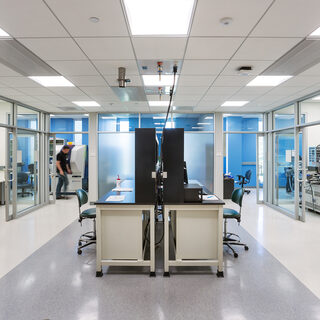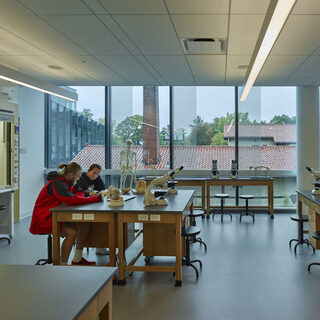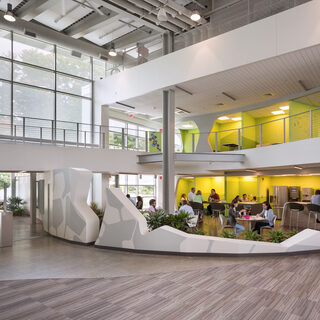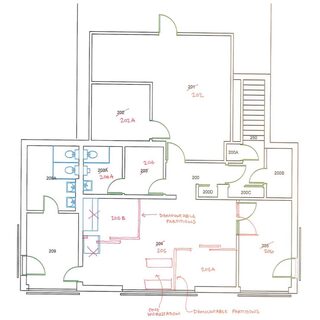Tradeline's industry reports are a must-read resource for those involved in facilities planning and management. Reports include management case studies, current and in-depth project profiles, and editorials on the latest facilities management issues.
Latest Reports
Yale Energy Sciences II
At its new West Campus, Yale University is incrementally repurposing and renovating a former corporate pharmaceutical manufacturing facility for new interdisciplinary programs, including the Energy Sciences Institute (ESI) and Yale West Campus Materials Characterization Core (MCC).
Immersing an Interdisciplinary Science Lab in the Natural World
The Greer Environmental Sciences Center at Virginia Wesleyan University is the institution’s response to a nearly 100 percent enrollment increase in their environmental sciences and biology department over five years. Located near the Chesapeake Bay, in Virginia Beach, the new 40,000-sf academic science building expands the university’s existing facilities to increase collaboration between science disciplines and regional partners, leveraging the school’s location at the mouth of the James River, where the 300-acre campus maintains a park-like setting with old growth forests and native wetlands in the middle of a dense, rapidly growing urban center.
Browning Hall, Interdisciplinary Science Building
Webster University’s new Browning Hall, Interdisciplinary Science Building, has transformed the university’s focus on science by tripling the number of science labs on campus. The 84,000-sf facility houses the departments of anthropology and sociology, biological sciences, international language and cultures, nurse anesthesia, nursing, and psychology, and the Institute for Human Rights & Humanitarian Studies.
Project SagaMORE
Project SagaMORE is an office building addition to a 2001 former biopharma pilot plant, the Protein Production Laboratory. In 2014 the building was converted to a high-performance collaborative office space with an industrial loft aesthetic. The facility was designed without private offices, and instead features multiple shared “we” spaces that include project, conference, huddle, and phone rooms. The original conversion project achieved a LEED Platinum CI rating.
Changing the Way Carnegie Mellon Approaches Change Management
Carnegie Mellon University is rethinking the way it approaches change management by broadening how it approaches the people involved. A workspace is not just four walls that contain an employee; there are also memories and a sense of identity tied up in that space. Doing the hard work of acknowledging those feelings, and working closely with employees to address their fear of change, can lay the groundwork for a more successful transition into a new space.





